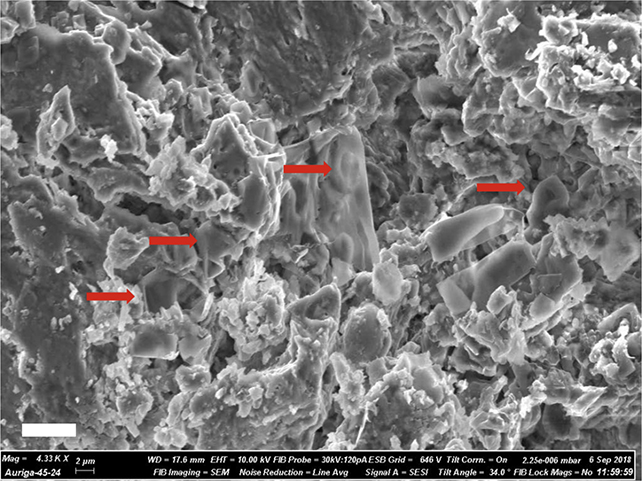At first glance, dinosaur fossils and modern cancer research may seem worlds apart.
But a new study suggests that soft tissue preserved for millions of years inside ancient bones could offer valuable insights into how cancer works – and how we might treat it today.
Researchers from the UK and Romania examined the fossilized remains of a Telmatosaurus transsylvanicus dinosaur, a small, cow-sized ‘marsh lizard’ that lived around 66–70 million years ago in what is now Romania.
Using high-powered microscopy, the team discovered structures resembling red blood cells (or erythrocytes), linked to a tumor in the dinosaur’s jaw, which a previous study discovered.

It’s a discovery that suggests small flecks of soft tissue may be preserved in fossils more often than we thought – and that means there’s much more we can figure out about these ancient creatures, including any diseases they had.
“Unlike skeletal structures alone, soft tissues contain proteins that provide molecular information that can reveal the underlying biological mechanisms of disease,” says oncologist Justin Stebbing, from Anglia Ruskin University in the UK.
“Our research, using relatively underused methods, invites further exploration that could hold the key to future discoveries that could benefit humans.”
For example, finding fragments of soft dinosaur tissue like those described here could prove to be crucial in understanding cancer mechanisms and how they’ve evolved, the researchers suggest.
Large animals like whales and elephants have evolved ways of protecting themselves against cancer, and it’s possible that dinosaurs could have, too.
Understanding these ancient biological adaptations might one day inform new approaches to cancer prevention or treatment in humans.
Careful preservation of these samples is key, however: we can assume that future scientific advances will be made in analysis equipment, but those upgrades won’t be as significant without any dinosaur tissue to study.
“Dinosaurs, as long-lived, large-bodied organisms, present a compelling case for investigating how species managed cancer susceptibility and resistance over millions of years,” says Stebbing.
“It is crucial that long-term fossil conservation efforts are coordinated to ensure that future researchers have access to specimens suitable for cutting-edge molecular investigations.”
The dinosaur that was the focus of this study had an ameloblastoma tumor, a tumor type still found in humans today.
That the dinosaurs roamed Earth for millions of years means the potential is there to see how cancer may have changed over that time – and how the afflicted species may have adapted.
And while it may seem implausible that anything organic could survive for so long, it is possible – as this new study shows – so we can see how genetics, biology, and environmental pressures helped to cause cancer in the Late Cretaceous.
“Proteins, particularly those found in calcified tissues like bone, are more stable than DNA and are less susceptible to degradation and contamination,” says Stebbing.
“This makes them ideal candidates for studying ancient diseases, including cancer, in paleontological specimens.”
The research has been published in Biology.







